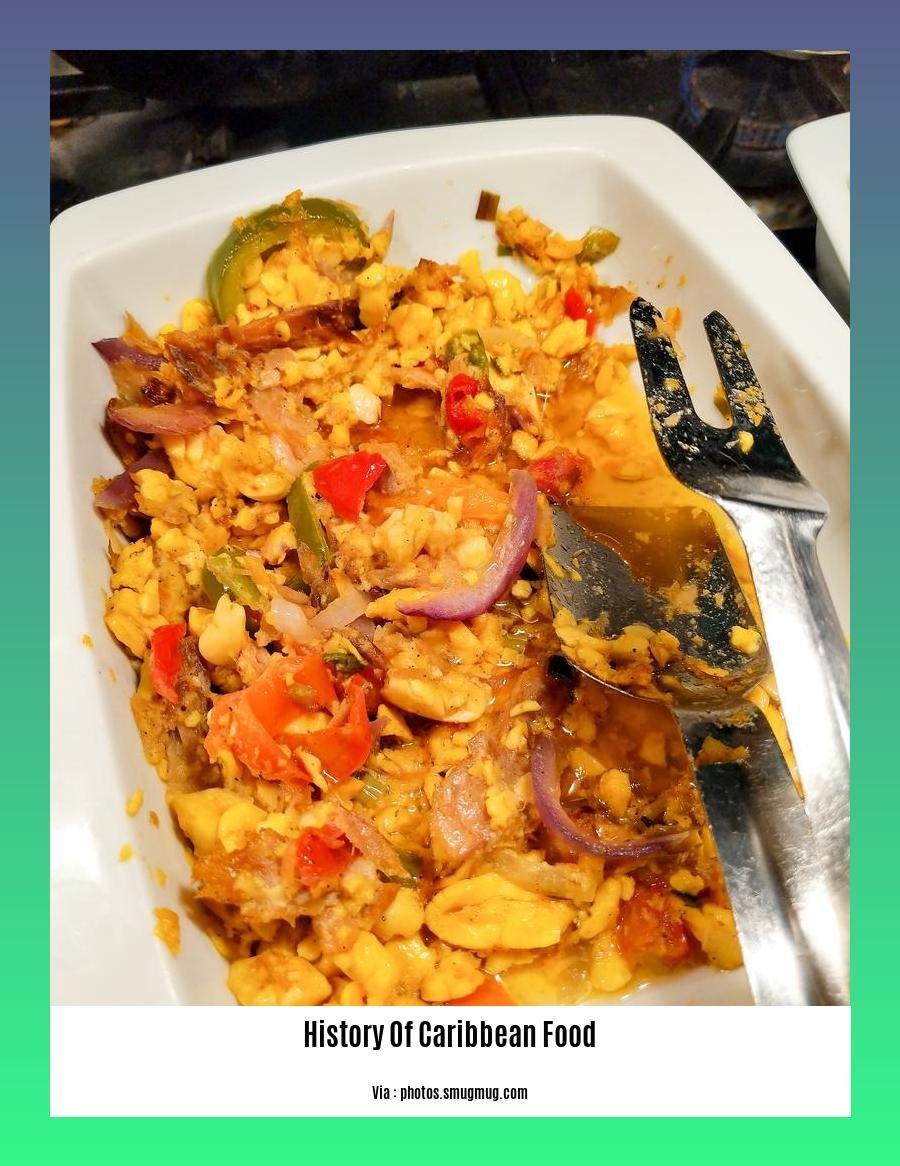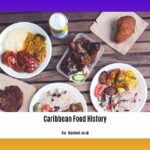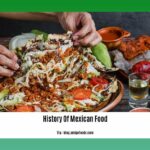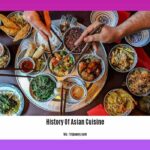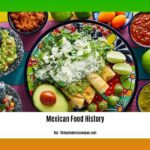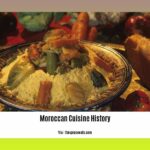Embark on a culinary odyssey through the tantalizing history of Caribbean food in [A Culinary Odyssey: Unveiling the Enticing History of Caribbean Food]. Discover how the region’s vibrant cuisine has been shaped by a tapestry of cultural influences, from indigenous Taino traditions to African, European, and Asian culinary contributions. Join us as we trace the evolution of Caribbean cuisine, exploring the stories behind the dishes that have captivated taste buds for generations.
Key Takeaways:
- Caribbean cuisine is a captivating blend of West African, Amerindian, East Asian, Arab, and South Asian culinary influences.
- Caribbean cuisine’s history reflects the confluence of cultural influences and centuries of global trading.
- Key ingredients like breadfruit, mangoes, and sugarcane were introduced by countries such as Spain, France, and England.
- Each Caribbean island has its unique culinary identity as a result of the blending of foods and cooking techniques from diverse cultures.
- Caribbean cuisine was also influenced by the cultural practices and culinary traditions of enslaved, indentured, and other laborers from Africa, Asia, and India.
History of Caribbean Food
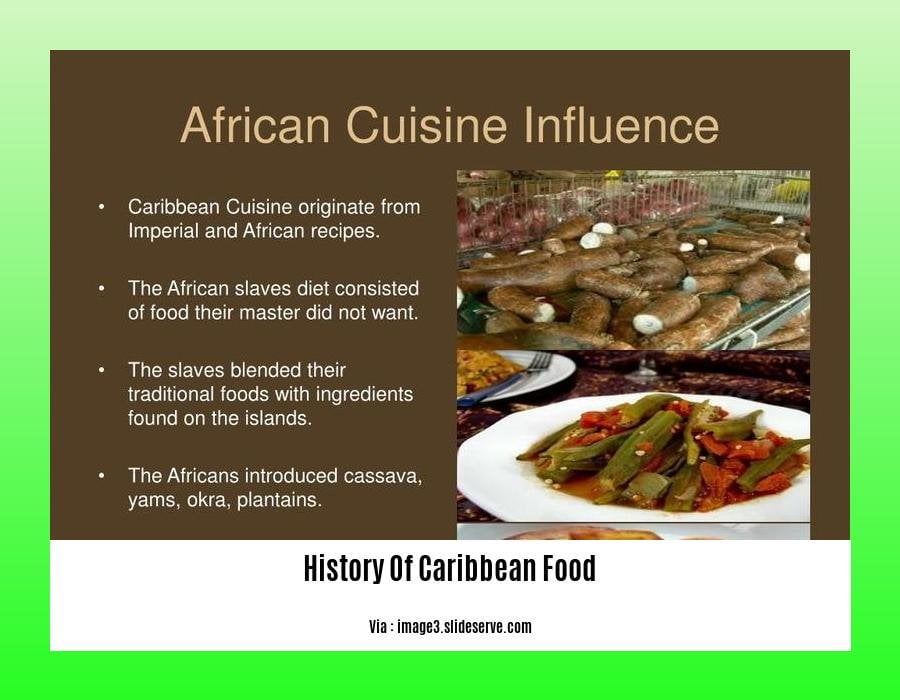
The culinary narrative of the Caribbean is a captivating tapestry woven with vibrant flavors, diverse cultural exchanges, and a rich historical context. It’s a symphony of tastes that echoes the region’s colonial past, indigenous traditions, and the convergence of global trading routes, resulting in a cuisine that is as unique as it is delectable.
A Culinary Convergence
The history of Caribbean food is a tale of culinary convergence, where the flavors of Africa, Europe, Asia, and the indigenous Amerindian peoples intertwined to create a vibrant fusion. Enslaved Africans brought their culinary traditions, showcasing okra, plantains, and the use of spices like Scotch bonnet peppers, which would become integral to Caribbean cuisine.
The Legacy of Colonialism
European colonizers introduced their ingredients and cooking techniques, including wheat, dairy, and the use of ovens. Sugarcane cultivation, brought to the Caribbean by the Spanish, introduced sugar as a key ingredient, while the British brought salt cod, which would become a staple in many dishes.
The Spice Trade’s Influence
The spice trade played a significant role in shaping the flavors of Caribbean food. Spices like nutmeg, cinnamon, and cloves, originating from Asia and the Middle East, found their way into Caribbean kitchens, adding layers of complexity and warmth to the region’s cuisine.
The Result: A Culinary Tapestry
Over centuries, this culinary convergence gave birth to a cuisine that is uniquely Caribbean. Each island developed its own distinct culinary identity, influenced by its history, culture, and available ingredients. From the spicy jerk chicken of Jamaica to the hearty sancocho stew of the Dominican Republic, each dish tells a story of the region’s rich heritage.
So, the next time you savor the tantalizing flavors of Caribbean food, remember that each bite is a testament to a culinary journey that has spanned centuries, blending diverse cultures and traditions to create a cuisine that is as captivating as the Caribbean itself.
Dive into the history of caramel and uncover the evolution of this delectable treat from its humble origins to its status as a beloved confectionary icon.
Embark on a culinary journey as we explore the history of chicken cordon bleu, a classic dish that has tantalized taste buds for centuries and remains a staple of French cuisine.
African Diaspora: The Enduring Legacy of Enslaved Africans on Caribbean Foodways
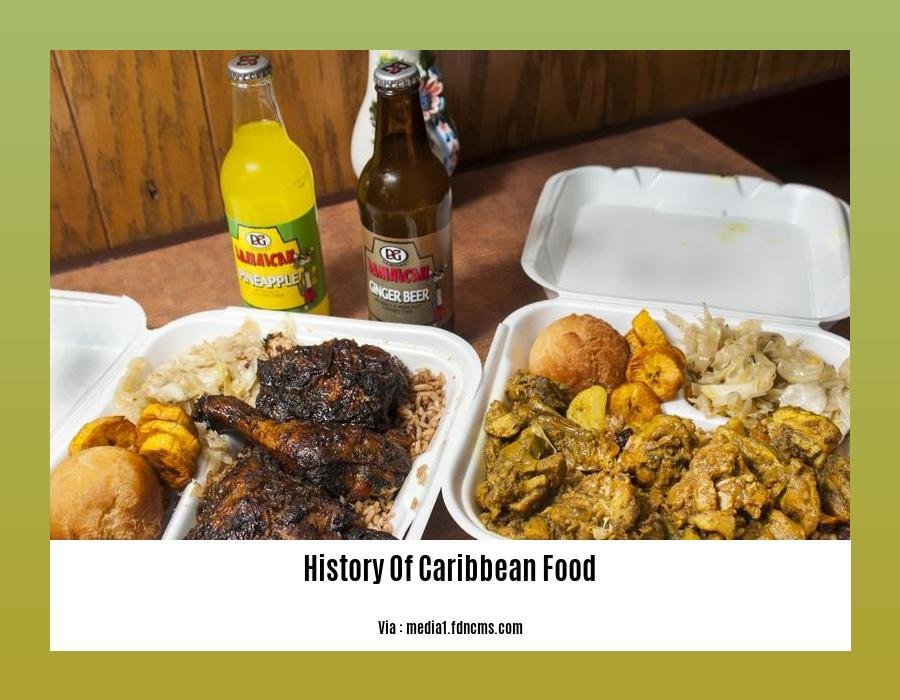
In the Caribbean, a culinary tapestry was woven from the threads of cultures brought together by the brutal transatlantic slave trade. Enslaved Africans, forcibly uprooted from their homelands, left an indelible imprint on the region’s cuisine, forever changing the flavors and traditions of Caribbean foodways.
The Diaspora’s Culinary Legacy: A Symphony of Resilience
The forced migration of Africans to the Caribbean shores brought with it a wealth of culinary knowledge and expertise. Enslaved Africans introduced a myriad of ingredients, cooking techniques, and culinary traditions that would become the foundation of Caribbean cuisine.
Okra, with its distinctive texture and flavor, became a staple in soups, stews, and side dishes, adding a touch of West African flair to Caribbean meals.
Plantains, versatile and adaptable, were embraced for their sweet and savory potential, whether fried, boiled, or roasted, they became a beloved part of Caribbean cuisine.
Scotch bonnet peppers, with their fiery heat and smoky aroma, brought a new level of spice to Caribbean dishes, adding depth and complexity to stews, sauces, and marinades.
These ingredients, along with many others, became the building blocks of Caribbean cuisine, a testament to the resilience and creativity of the enslaved Africans who shaped its culinary landscape.
The Triangular Trade: A Culinary Exchange
The transatlantic slave trade, a dark chapter in human history, also played a role in the development of Caribbean cuisine. The triangular trade system, with its vertices in Europe, Africa, and the Americas, facilitated the exchange of goods, cultures, and culinary traditions.
Europeans brought wheat, dairy, sugar, and salt cod to the Caribbean, ingredients that would become integral to the region’s cuisine. Wheat flour formed the base of breads, pastries, and dumplings, while dairy products enriched stews, sauces, and desserts. Sugar, a symbol of both wealth and exploitation, became a key ingredient in Caribbean sweets and beverages. Salt cod, preserved for long sea voyages, became a staple protein source, its salty flavor adding depth to stews, fritters, and other dishes.
The spice trade, with its exotic flavors and aromas, further enriched Caribbean cuisine. Nutmeg, cinnamon, and cloves, brought from the East Indies, added complexity and warmth to Caribbean dishes, enhancing their flavors and creating a distinctive culinary profile.
A Culinary Tapestry: The Legacy Lives On
Over centuries, the culinary traditions brought by enslaved Africans, combined with the influences of European colonizers and the indigenous peoples of the Caribbean, wove together a vibrant tapestry of flavors and dishes. Each island developed its unique culinary identity, reflecting its own history, culture, and geography.
Jamaica, with its strong African influence, is known for its jerk chicken, a spicy, aromatic dish that captures the essence of Caribbean cuisine. Trinidad and Tobago, with its diverse cultural mix, boasts a culinary melting pot of flavors, from curries to roti, a testament to the island’s rich heritage. Barbados, with its emphasis on seafood, delights with its flying fish and cou-cou, a national dish that showcases the bounty of the sea.
Key Takeaways:
- African Diaspora: Enslaved Africans brought a wealth of culinary knowledge and expertise to the Caribbean, introducing ingredients like okra, plantains, and Scotch bonnet peppers.
- Triangular Trade: The transatlantic slave trade facilitated the exchange of goods and culinary traditions between Europe, Africa, and the Americas, further enriching Caribbean cuisine.
- Culinary Tapestry: Caribbean cuisine is a vibrant tapestry of flavors and dishes, with each island developing its unique culinary identity, reflecting its history, culture, and geography.
Citations:
- The African Diaspora: Slavery, Modernity, and Globalization
- How the Trans-Atlantic Slave Trade Created the African Diaspora
European Encounters: The Impact of Spanish, French, and British Colonizers on Caribbean Cuisine
Culinary adventurers, gather around! Today, we embark on a tantalizing voyage through the history of Caribbean cuisine, where we’ll delve into the profound impact of European colonizers on this vibrant culinary landscape. From the arrival of Christopher Columbus in 1492 to centuries of colonial rule, the infusion of European flavors and techniques has left an undeniable mark on Caribbean gastronomy. So, buckle up, grab your virtual aprons, and let’s savor the delicious tales of European Encounters: The Impact of Spanish, French, and British Colonizers on Caribbean Cuisine!
Spanish Sojourn: A Symphony of Flavors
Our culinary journey begins with the arrival of the Spanish conquistadors. These intrepid explorers brought with them a treasure trove of ingredients and culinary practices that would forever transform Caribbean cuisine. Think tomatoes, onions, garlic, and wheat—all of which became integral to the region’s culinary tapestry.
French Finesse: A Touch of Elegance
Next up, we have the French, who brought their renowned culinary finesse to the Caribbean. Their influence is most evident in the use of sophisticated techniques, such as sauces, marinades, and flaky pastries. From the delicate flavors of French-style quiches to the rich aroma of aromatic stews, the French have left a lasting legacy on Caribbean gastronomy.
British Influence: A Colonial Legacy
The British, with their penchant for hearty fare, introduced an array of ingredients and dishes that would become staples in Caribbean kitchens. Salt cod, a British staple, found its way into iconic dishes like ackee and saltfish, a Jamaican national dish. Additionally, the British brought with them a love for dairy products, which can be seen in the widespread use of milk, cheese, and butter in Caribbean cuisine.
A Culinary Convergence: A Symphony of Tastes
As these European influences converged, they gave rise to a unique and delectable fusion cuisine. Caribbean chefs masterfully blended indigenous ingredients with European techniques, creating a vibrant culinary symphony. This convergence resulted in dishes that are a true testament to the region’s rich history and cultural diversity.
Key Takeaways:
- European colonizers significantly influenced Caribbean cuisine by introducing new ingredients, techniques, and culinary traditions.
- Spanish influence brought tomatoes, onions, garlic, and wheat to the Caribbean.
- French influence introduced sauces, marinades, and pastries to Caribbean cuisine.
- British influence brought salt cod, dairy products, and hearty fare to the Caribbean.
- The blending of these influences resulted in a unique fusion cuisine that reflects the region’s diverse heritage.
Relevant URL Sources:
- The History of Caribbean Cuisine
- Caribbean Food: A Culinary Journey
A Symphony of Flavors: The Fusion and Evolution of Caribbean Cuisine in the Modern Era
Embark on a culinary voyage through the vibrant flavors of Caribbean cuisine, where a symphony of tastes and aromas awaits. The Caribbean region is a melting pot of cultures, and its cuisine reflects this diversity, blending indigenous traditions with influences from Africa, Europe, and Asia. It’s a testament to the region’s rich history and the resilience of its people.
A Legacy of Culinary Convergence
The history of Caribbean cuisine is a fascinating tapestry of cultural exchange. Indigenous peoples, the region’s first inhabitants, introduced staples like cassava, plantains, and sweet potatoes, which remain integral to Caribbean cooking. With the arrival of European colonizers, African slaves, and indentured servants from India, a vibrant culinary fusion began to take shape.
African influences brought okra, plantains, and the fiery Scotch bonnet pepper, while Europeans contributed wheat, dairy, sugar, and salt cod. The spice trade introduced nutmeg, cinnamon, and cloves, adding depth and complexity to Caribbean dishes.
Over centuries, this culinary convergence resulted in a unique Caribbean cuisine. Each island developed its own distinct identity, influenced by its cultural heritage and available ingredients. Jamaica’s jerk chicken, Trinidad and Tobago’s roti, and Barbados’ flying fish are just a few examples of this culinary diversity.
A Symphony of Flavors
The flavors of Caribbean cuisine are as diverse as the region itself. From the spicy heat of Jamaican jerk to the sweet and tangy flavors of Trinidadian doubles, each dish tells a story of cultural exchange and adaptation.
Common ingredients include:
- Tropical fruits: Mangoes, pineapples, bananas, and coconuts add vibrant flavors and colors.
- Spices: Allspice, cumin, thyme, and Scotch bonnet peppers bring warmth and heat.
- Seafood: Fresh fish, lobster, conch, and shrimp are staples of the Caribbean diet.
- Meats: Chicken, beef, and pork are often marinated and grilled or stewed with flavorful spices.
Key Takeaways:
- Caribbean cuisine is a blend of indigenous, African, European, and Asian influences.
- Each Caribbean island has its unique culinary identity, shaped by its history and culture.
- Common ingredients include tropical fruits, spices, seafood, and meats.
- Caribbean dishes are known for their bold flavors and vibrant colors.
- The region’s cuisine is a testament to its rich history and cultural diversity.
Citations:
[1] Taste The Islands: Caribbean Flavors and Traditions by Jennifer Trainer Thompson (2019).
[2] Caribbean Cuisine: A Journey Through the Flavors of the Islands by Cynthia Nelson (2018).
